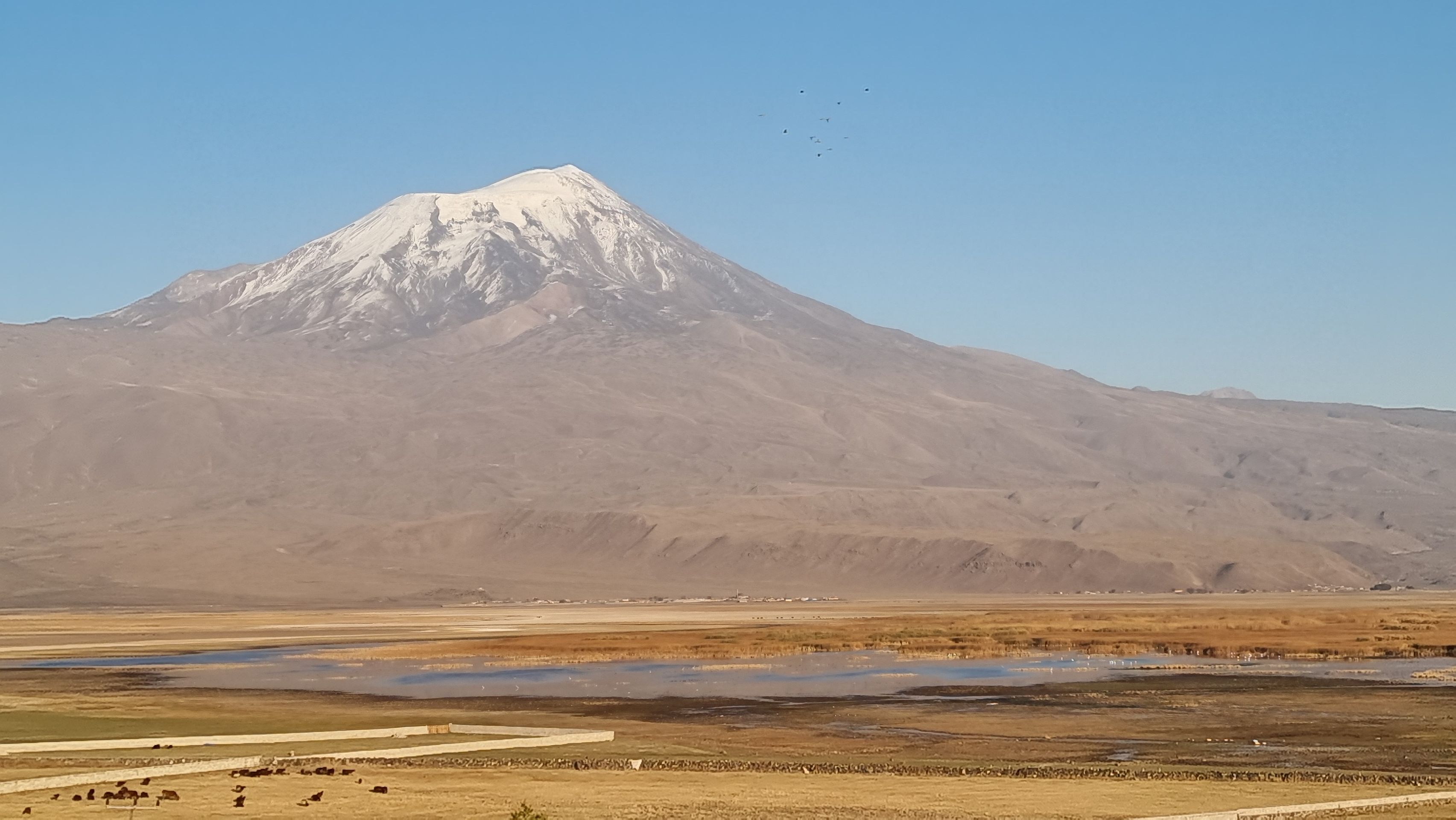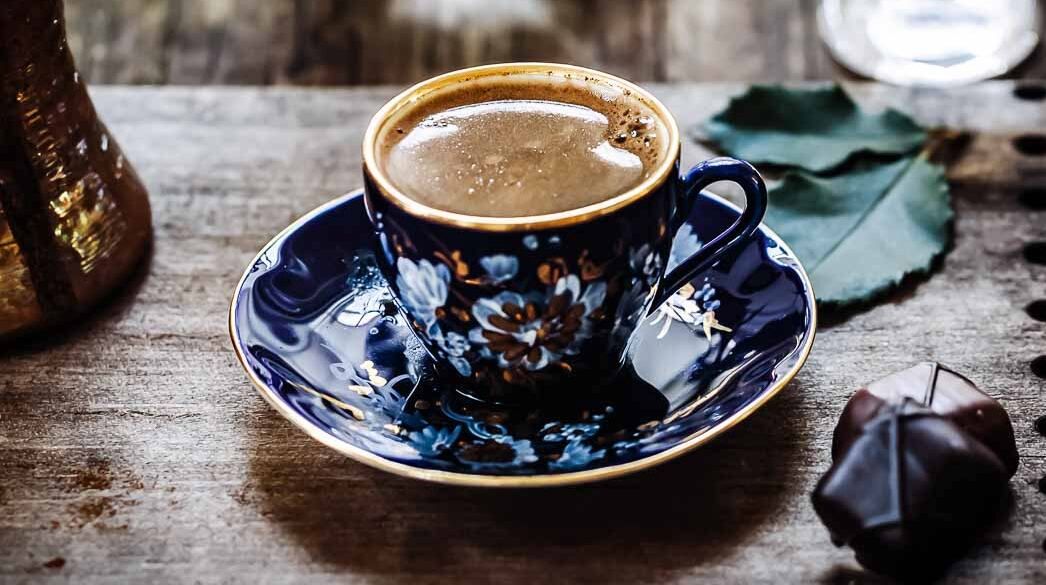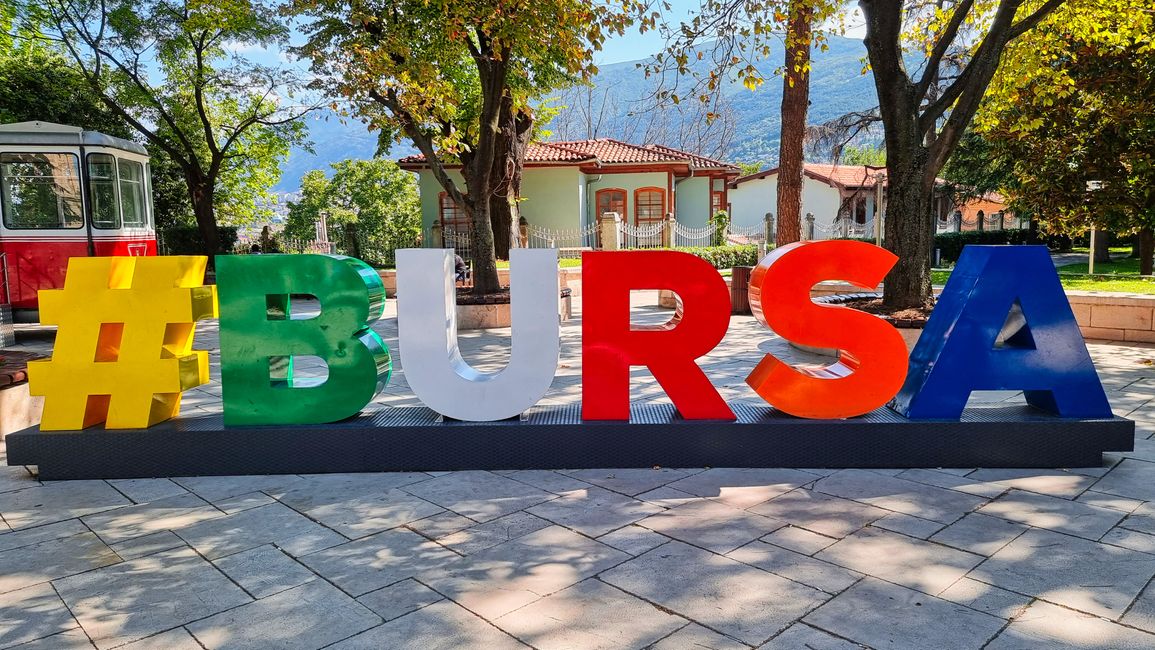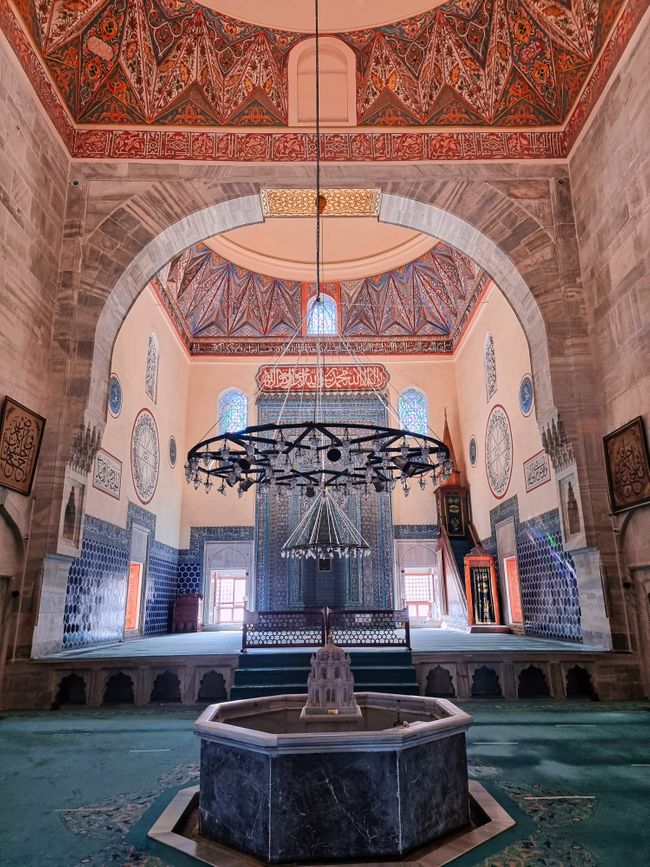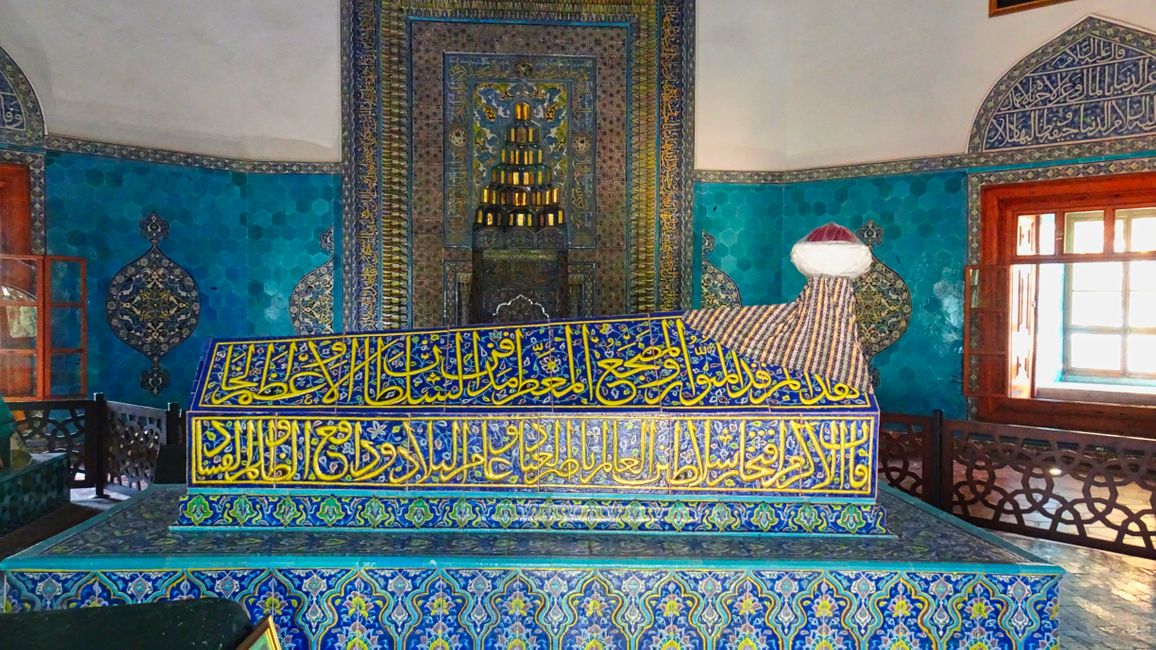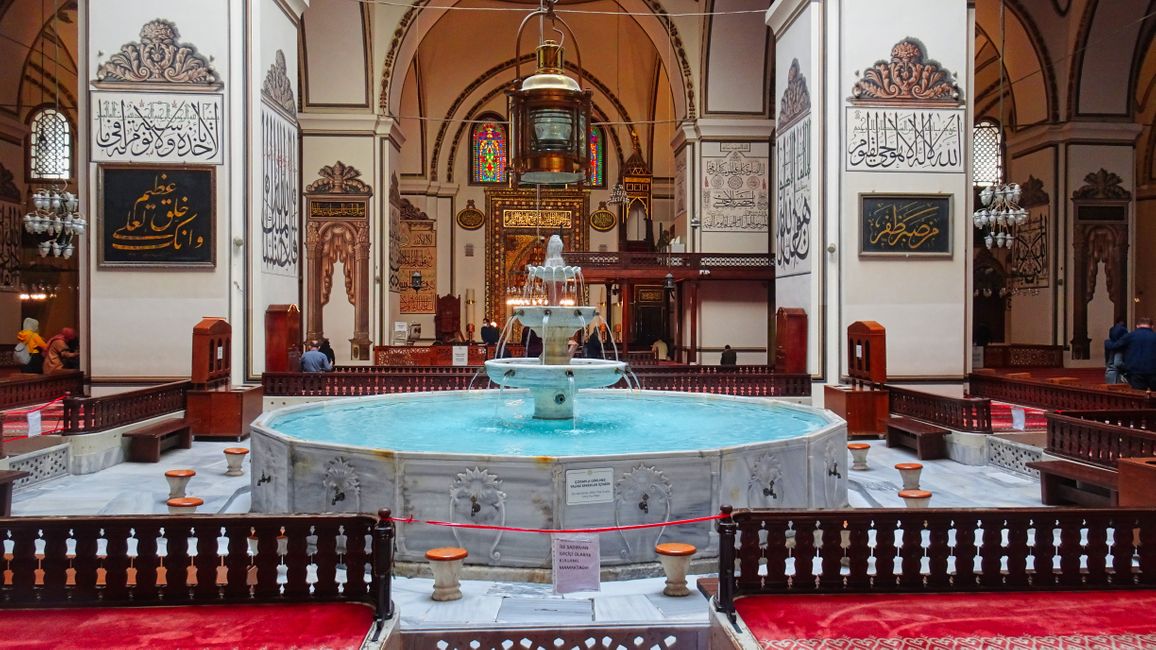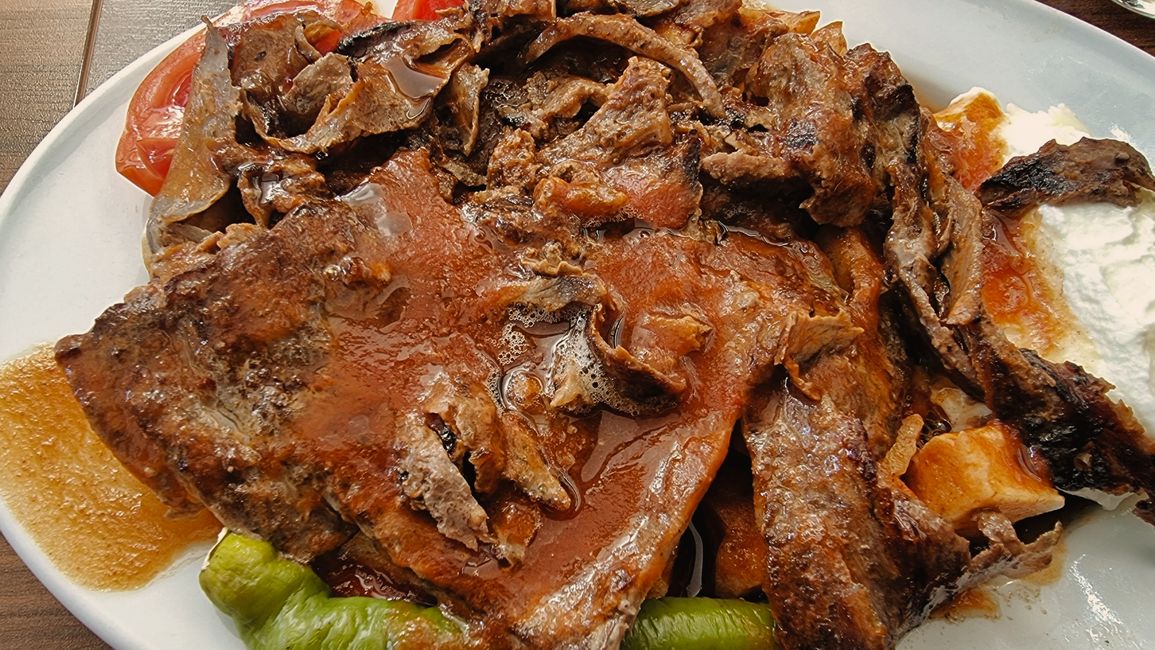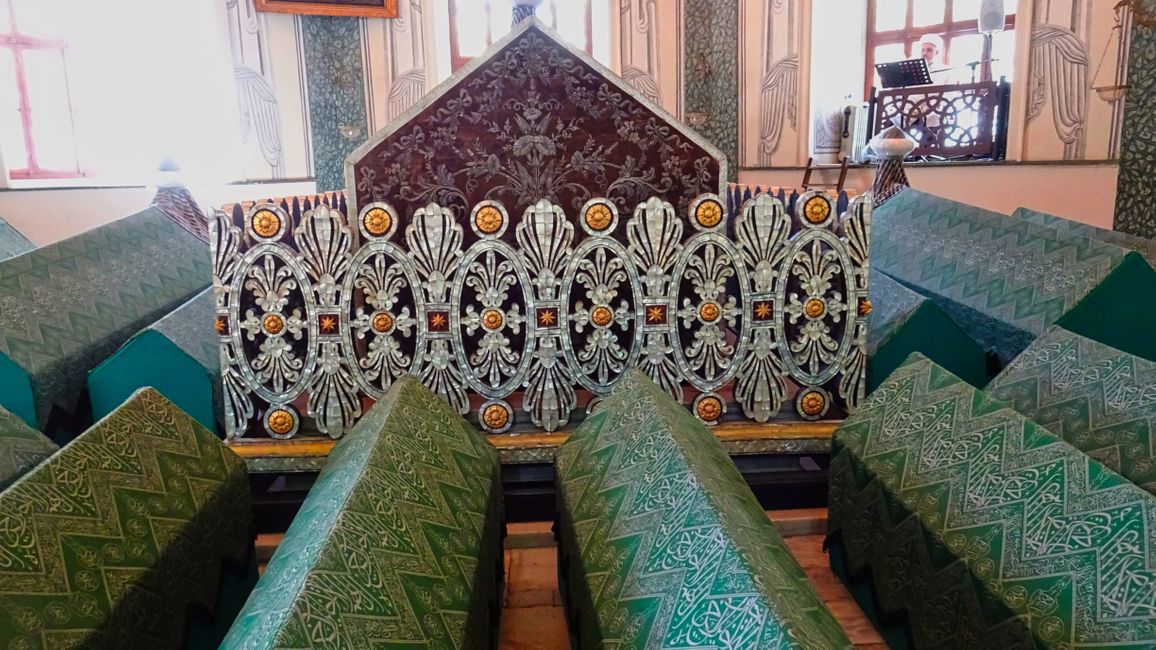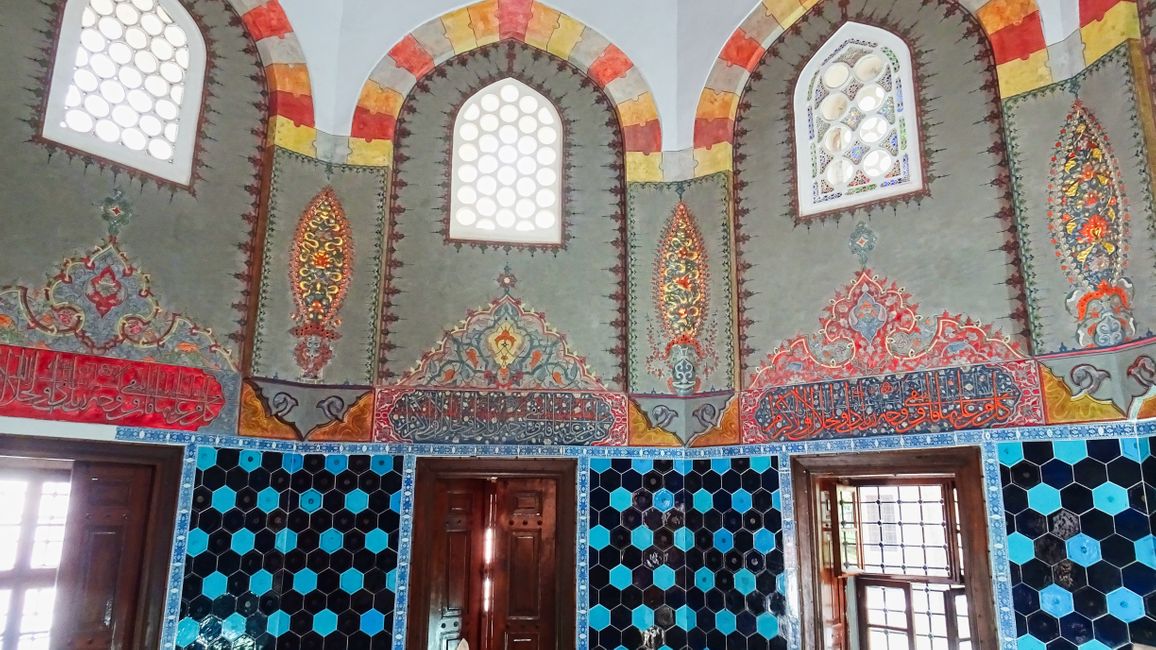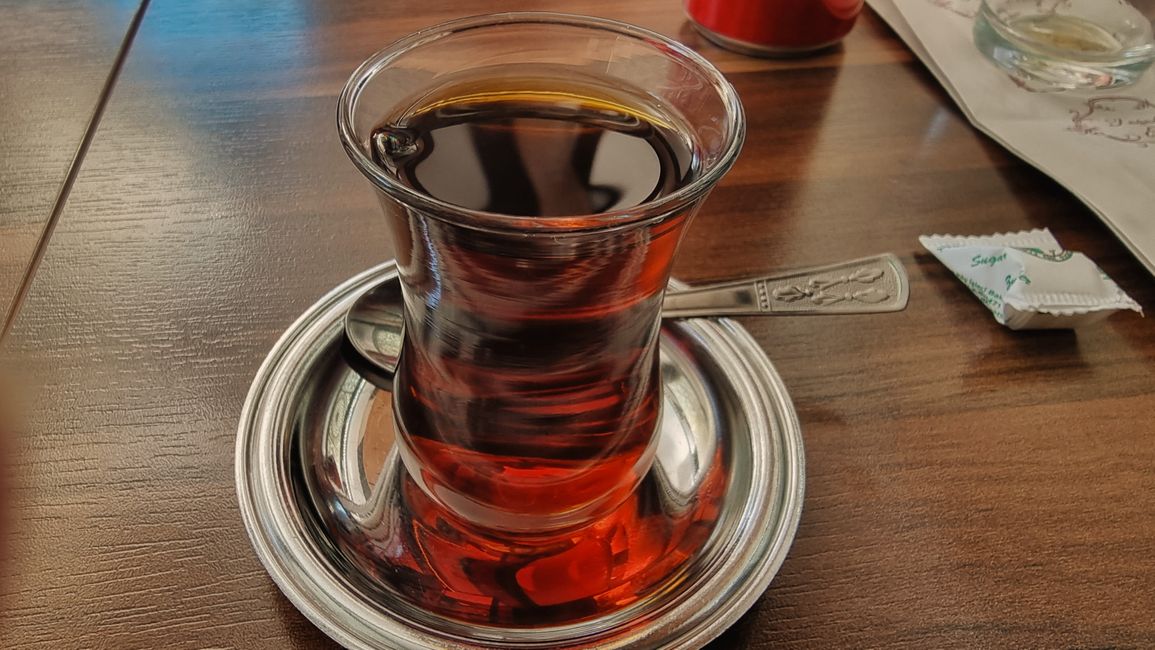Don Curry without a car
Objavljeno: 06.10.2021
Pretplatite se na Newsletter
Don Curry absolutely loves driving by car. In a planned round trip of around 10,000 kilometers, he has to, every day. Except for today. Although Don Curry originally planned to drive to the scattered sights of Bursa by car, after his experience of the Bursa traffic conditions yesterday and in anticipation of the parking situation, he decided at short notice to do something completely different: he gave his car the day off!
The day began with his first Turkish breakfast buffet at the Hotel Gönlüferah. There, Don Curry experienced his first self-service buffet without self-service, because the buffet was so blocked off that no hotel guest could get closer than 2 meters. In the space between, several waiters gathered, each turned to a guest, took a large plate for him, and then packed the desired buffet components on the plate on request. Since several hotel guests expressed their breakfast wishes at the same time, it was quite restless in the breakfast room. Don Curry loudly ordered 2 cigar-shaped böreks, some cold cuts, and plenty of tomato and cucumber pieces; bread and coffee were brought to his table.
After a light meal, he left his hotel and looked for a taxi. For the equivalent of 3.40 €, it took him across the metropolis to the Green Mosque, the sight that is furthest from his hotel. To understand the structure of Bursa, one must familiarize oneself with early Ottoman history. It was the Seljuk ruler Osman who besieged the Byzantine city of Proussa for 10 years at the beginning of the 14th century; only his son Orhan succeeded in the conquest, and he decided to make the city, now called Bursa, the capital of his own empire, which was later called the Ottoman Empire in honor of his father. Shortly after Orhan's death, the capital dignity moved to Edirne, later to Istanbul, but almost all early Ottoman rulers beautified their native city with magnificent buildings and also chose it as the place of their grave, just as it had already happened with Osman and Orhan. However, each sultan chose his own hill near the original city hill for this purpose, so that visiting the various sights in Bursa not only involves long distances, but also a constant up and down. Don Curry was about to feel that.
But he could start on a hilltop because the Green Mosque is one of those sultan mosques with a tomb that was built by a later sultan: in this case Mehmet I. It is called the Green Mosque because it was once adorned with magnificent Iznik faiences on the outside and inside. After several earthquakes, there was nothing left of the outer cladding, so the mosque looks quite simple. All the more impressive is the interior with the well-preserved tiles in vibrant shades of green and blue. Green is also the predominant color of the tomb chapel (türbe) of Mehmet I located above. This building still shines in a rich light green on the outside and almost sparkles in the sun.
Filled with these first impressions of Bursa's world heritage, Don Curry set off on a rather steep descent and discovered the Ottoman merchant bridge in the river valley, which, after its restoration, is again completely built on both sides with small shops so that the unsuspecting passers-by do not notice that they are actually crossing a river valley. Now it was not far to Heykel, the central square of Bursa with a famous equestrian statue of Atatürk. Here, the huge bazaar area also began, which extended over an entire district with numerous longitudinal and transverse alleys. Don Curry was astonished that one could also buy a sofa or other furniture in the middle of the bazaar. Could you even buy the delivery service at the same time?
On the edge of the bazaar is the Orhan Mosque, which was built by the conqueror and new founder of Bursa already in the mid-14th century. Unfortunately, it was currently being renovated, so it was not possible to visit. Only a few meters away is the Ulu Cami, the Great Mosque, which goes back to Sultan Beyazit I. Before an important battle, he promised to build 20 mosques if he were to win. He actually won, but his economical grand vizier had a better idea of how to fulfill the vow more cost-effectively: a large mosque with 20 domes was simply built in Bursa, whereby the middle dome was deliberately left out to directly supply the mosque fountain located there with rainwater. Today there is a glass dome there. Once again, a mosque could surprise Don Curry, who was becoming knowledgeable in this regard. In addition to the forest of columns that had to support the 20 domes, the interior presented itself in dazzling white, which was only interrupted by huge black calligraphies from the Quran. A very sublime sight overall.
The already covered kilometers and the lavish art enjoyment were now starting to arouse Don Curry's appetite. He had something special planned for Bursa, namely the city's most famous specialty, which has been known as Iskender Kebab since its inventor, a Mr. Iskender, 100 years ago. In the meantime, descendants of Mr. Iskender have acquired the naming rights and founded a restaurant chain specialized in Iskender Kebab, so the other restaurants must now offer Bursa Kebab to avoid being sued for violation of naming rights. (So it works without the EU too!) As Don Curry could not find an Iskender restaurant in the bazaar district, he simply chose any other house and ordered Bursa Kebab instead. The recipe is the same and was prepared right in front of Don Curry's eyes: freshly cut kebab meat from the rotating spit was served on a layer of diced flatbread with a few tomato slices. Everything was covered with hot spicy tomato sauce and lots of brown butter, and a generous dollop of yogurt was added. Delicious! Don Curry paid 4.80 € for this specialty, including 1 can of Coke Zero, and since he had finished everything and praised the food to the host, he was served a Turkish tea free of charge.
Refreshed, he set off again, uphill this time. His next destination was the original settlement core of Bursa before the Ottoman era, which was located on a high plateau and fortified. Some mighty remnants of walls still testify to the sturdy presence of this part of the city, but Don Curry had set his sights on the graves of the founding sultans, which are now located in the middle of a park-like area with extensive views of Bursa and the surrounding mountains. Already Orhan's Türbe showed exceptional splendor, but Osman's mausoleum was the true highlight. Two guards in Ottoman uniforms were stationed at the entrance, inside the türbe an imam sang prayers incessantly, and the gigantic coffin was crowned by an equally gigantic turban. Don Curry was not surprised by this effort, after all, today's Sultan secretly dreams of the past power of the Ottoman Empire and its possible restoration...
But he didn't have much time for current political reflections; he had to climb up and down again for another glimpse into the past. In today's district of Muradiye, Sultan Murad II had his mosque and tomb built. In the meantime, Don Curry was starting to feel a certain satiation with mosques because despite their lush and colorful furnishings, the 'Wow' effect did not materialize this time; well, it was just an old Ottoman mosque, so what? However, when Don Curry entered the adjacent burial ground, his enthusiasm quickly returned. Here, there was not just one tomb, there were twelve. After the first visits, Don Curry compared them to surprise eggs: from the outside, the türbes hardly differed, but the interior was always differently designed, sometimes very simple, especially with the female graves, sometimes with breathtaking opulence that left mouths open behind masks. The simplest belongs to Sultan Murat II. As a former dervish monk, he did not believe in pomp and wealth. His Türbe and his grave were to be open at the top so that the rain could reach him.
Right next to the collection of graves, a typical Turkish teahouse had settled, where many people sat outside on the extensive grounds, chatting and drinking tea. Don Curry also sat down and simply enjoyed the peace, rested his feet, and savored the good Turkish tea, which was always served unsweetened in small glass cups. He could get used to that, ordered another one, and 0.5 liters of water. In the end, he paid 70 cents for 3 drinks.
Down again. Up again. At the highest point of the path so far, Sultan Murat I had his mosque with türbe built. The fact that this ruler had given himself the epithet 'Creator of the Universe' not only testified to a strong self-confidence but also reflected in the style of his buildings. His mosque is the only one with two floors, with the madrasa housed on the upper floor. The colorful painting and the precious furnishings perhaps did not make it the ultimate highlight of today's cultural tour, but certainly a highlight. When leaving the mosque, the call to prayer resounded loudly from the minaret, producing multiple echoes thanks to the surrounding mountains. Don Curry took this as the final word of his day without a car. The hotel was only about 100 meters away; in 6 hours with a total of 20,412 steps, he had covered 15.2 km, right through a metropolis.
In the evening, Don Curry set off again, this time to find a restaurant near his hotel. But in vain; he could only have chosen other hotel restaurants. However, since such restaurants generally do not have to establish customer loyalty, their performance is almost always underambitious. That was also true of his choice today in the hotel restaurant: a tomato salad and a grilled veal skewer on garlic bread. Not bad, but without any memorable qualities.
He would remember his day without a car instead. Because tomorrow, it's Don Curry with a car again...
.
Pretplatite se na Newsletter
Odgovor
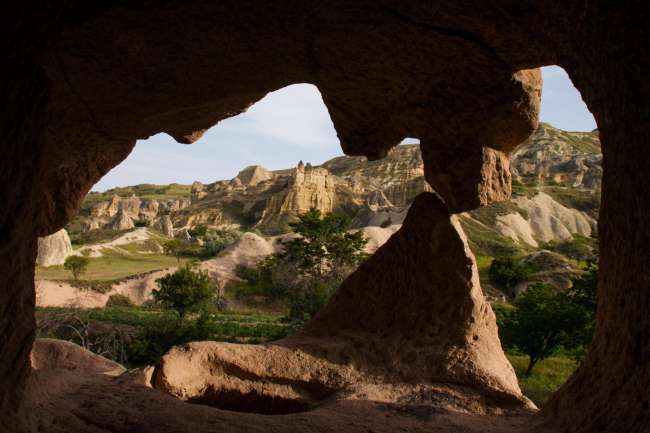
Izvješća o putovanju Purica
